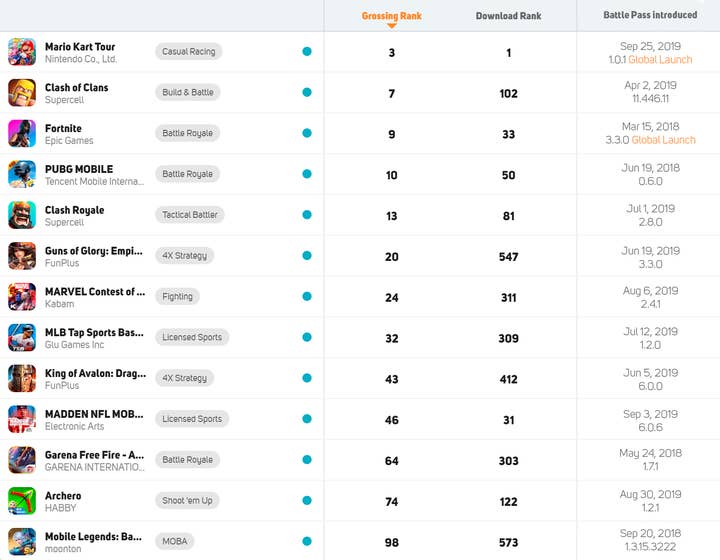Mario Kart Tour's Gold Pass has potential - if done right | Opinion
GameRefinery's Joel Julkenen analyses how Nintendo is experimenting with the increasingly popular Battle Pass model
Much has been made about Nintendo's latest mobile game launch. Mario Kart is one of Nintendo's crown jewels; a game that is both a system-seller for whatever generation of Nintendo device you can think of, as well as a game that continually sets the standard for what a fun racing game should be.
Nintendo games running on Nintendo's own hardware tend to be a seamless experience. However, shifting these games onto mobile has meant that the combination of classic Nintendo IP and free-to-play monetization has created a very different user experience.
Nintendo has already experimented with different monetization models. The first foray into mobile, Miitomo, used in-app purchases to allow players to customise their Mii avatar. This was quickly followed by Super Mario Run, which was positioned as a free-to-start game with a $10 price tag for the full experience. Subsequent games Fire Emblem Heroes and Animal Crossing: Pocket Camp make use of a stamina/energy system that is very familiar to many free-to-play games.
"Mario Kart Tour is probably the first implementation of a Battle Pass that puts a game mode behind a paywall"
For Mario Kart Tour, Nintendo has shifted its monetization approach once again, using its own take on the 'Battle Pass' approach. The hard paywall this has introduced to the game has already created plenty of negativity, but as we'll see, Nintendo is just the latest games company to use battle passes as their key monetization strategy.
Mario Kart's season (tours) last for two weeks and players have a limited time to complete and earn the rewards. Similar to any Battle Pass, the Gold Pass unlocks the "premium" reward track. One interesting difference from the norm, however, is the implementation of the gold pass as a monthly-based subscription, whereas other Battle Passes ask for a single transaction for the entire season (e.g. two months). Mario Kart Tour also puts the fastest racing class behind the paywall of the Gold Pass instead of just giving better season progression rewards.
Battle Passes are relatively new to the mobile gaming market. Fortnite was the first major title to introduce it back in spring of 2018 with the game's mobile launch. For a while, the feature was mainly seen in other Battle Royale games, but if we fast forward to today, its popularity has skyrocketed. The big boom started early this year, back in February only 2% of top 100 grossing games (iOS US) included a Battle Pass and today we are at 13% with a clear increasing trend.

"The feeling of 'missing out' is a strong psychological driver as rewards are only available for a limited time"
What makes the Battle Pass such an effective mechanic, appealing to developers, is that it boosts both monetization and retention, and gives players a progression mechanic. Therefore, Nintendo has decided to follow the market as we see more and more Battle Pass implementations across genres from idlers, 4X, strategy, tycoon to sports games -- although this clearly surprised many given the current controversy and Nintendo's track record of doing things their own way.
Battle Passes typically have two layers: free and premium. Therefore, players can progress in the season even if they haven't bought the pass yet, but only receive inferior free layer rewards for reaching each threshold. Players can, however, upgrade from free to premium at any point of the season, and if they do, premium rewards corresponding to their Battle Pass tier are unlocked immediately. In other words, the higher players climb, the more tempted they are to upgrade to premium so they can unlock the real goodies they've earned while playing. This carrot on a stick, in turn, increases conversions from free users into paying ones.
That the Battle Pass offers clear goals gives players a real sense of what they'll get in return for their money. Moreover, the feeling of "missing out" is a strong psychological driver as rewards are only available for a limited time, so it's no surprise that the Battle Pass has proven to be a powerful retention mechanic.
So on paper, it would look like Nintendo is making the right move and including a Battle Pass could very well fit Mario Kart. Mario Kart's implementation of the Battle Pass is, let's say, interesting. It's probably the first implementation of Battle Pass that puts a game mode (200cc) behind a paywall.
The Pass' rewards also seem to be lacklustre when compared with special limited-time skins in Fortnite's Battle Pass, for example. Mario Kart does at least offer season-specific rewards that players can earn from loot boxes as well, including a couple of season-specific characters. But this also emphasizes how the Gold Pass feels a bit light with no way to unlock these items through the pass.
There is a lot of potential for a Battle Pass in Mario Kart, and these have proven to be an effective mechanic in many ways -- if done right. However, the current implementation may still need some further tweaking to find the right balance between Mario Kart's loot box economy and the Gold Pass. How much will depend on how well Mario Kart performs in the market after the initial spike in users.
Joel Julkenen is head of game analysis and co-founder at mobile analytics provider GameRefinery
